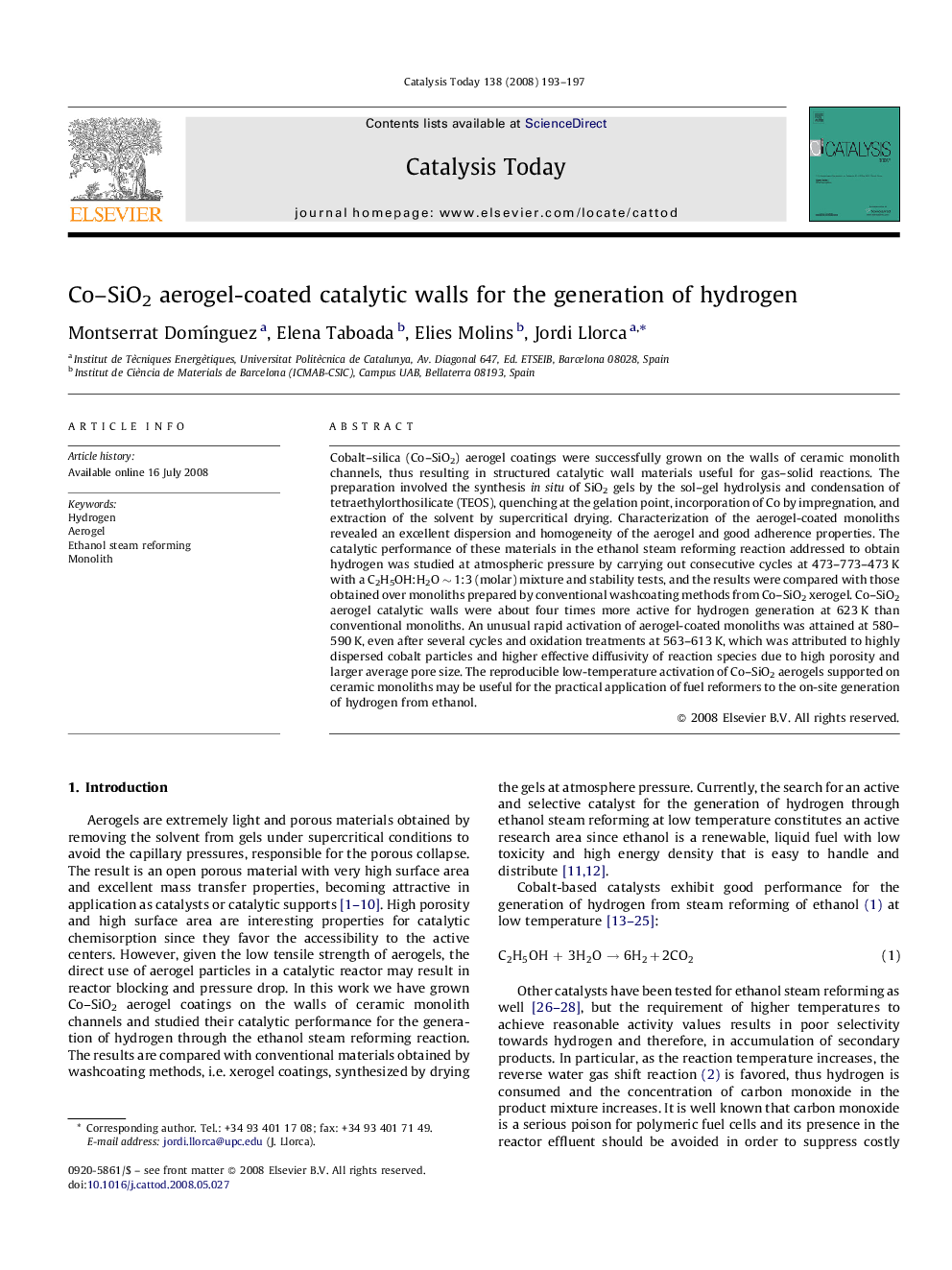| Article ID | Journal | Published Year | Pages | File Type |
|---|---|---|---|---|
| 57796 | Catalysis Today | 2008 | 5 Pages |
Cobalt–silica (Co–SiO2) aerogel coatings were successfully grown on the walls of ceramic monolith channels, thus resulting in structured catalytic wall materials useful for gas–solid reactions. The preparation involved the synthesis in situ of SiO2 gels by the sol–gel hydrolysis and condensation of tetraethylorthosilicate (TEOS), quenching at the gelation point, incorporation of Co by impregnation, and extraction of the solvent by supercritical drying. Characterization of the aerogel-coated monoliths revealed an excellent dispersion and homogeneity of the aerogel and good adherence properties. The catalytic performance of these materials in the ethanol steam reforming reaction addressed to obtain hydrogen was studied at atmospheric pressure by carrying out consecutive cycles at 473–773–473 K with a C2H5OH:H2O ∼ 1:3 (molar) mixture and stability tests, and the results were compared with those obtained over monoliths prepared by conventional washcoating methods from Co–SiO2 xerogel. Co–SiO2 aerogel catalytic walls were about four times more active for hydrogen generation at 623 K than conventional monoliths. An unusual rapid activation of aerogel-coated monoliths was attained at 580–590 K, even after several cycles and oxidation treatments at 563–613 K, which was attributed to highly dispersed cobalt particles and higher effective diffusivity of reaction species due to high porosity and larger average pore size. The reproducible low-temperature activation of Co–SiO2 aerogels supported on ceramic monoliths may be useful for the practical application of fuel reformers to the on-site generation of hydrogen from ethanol.
